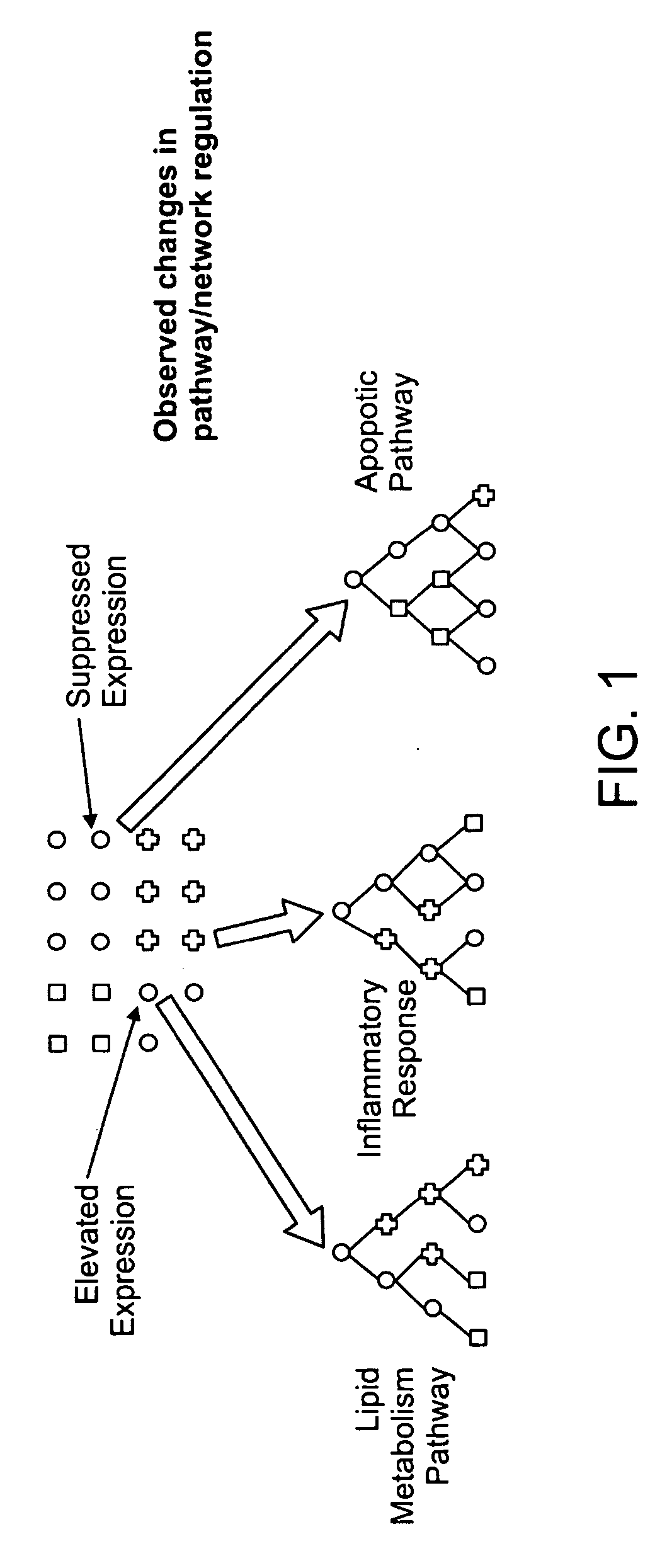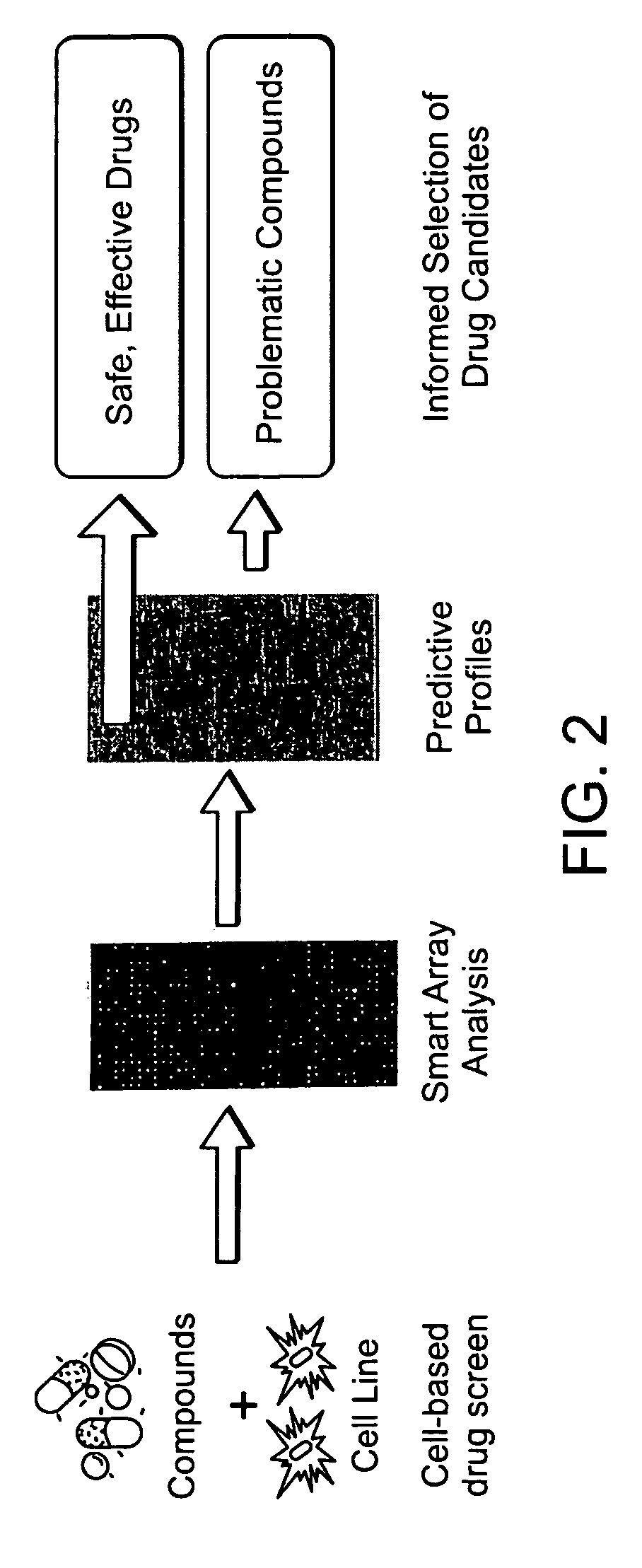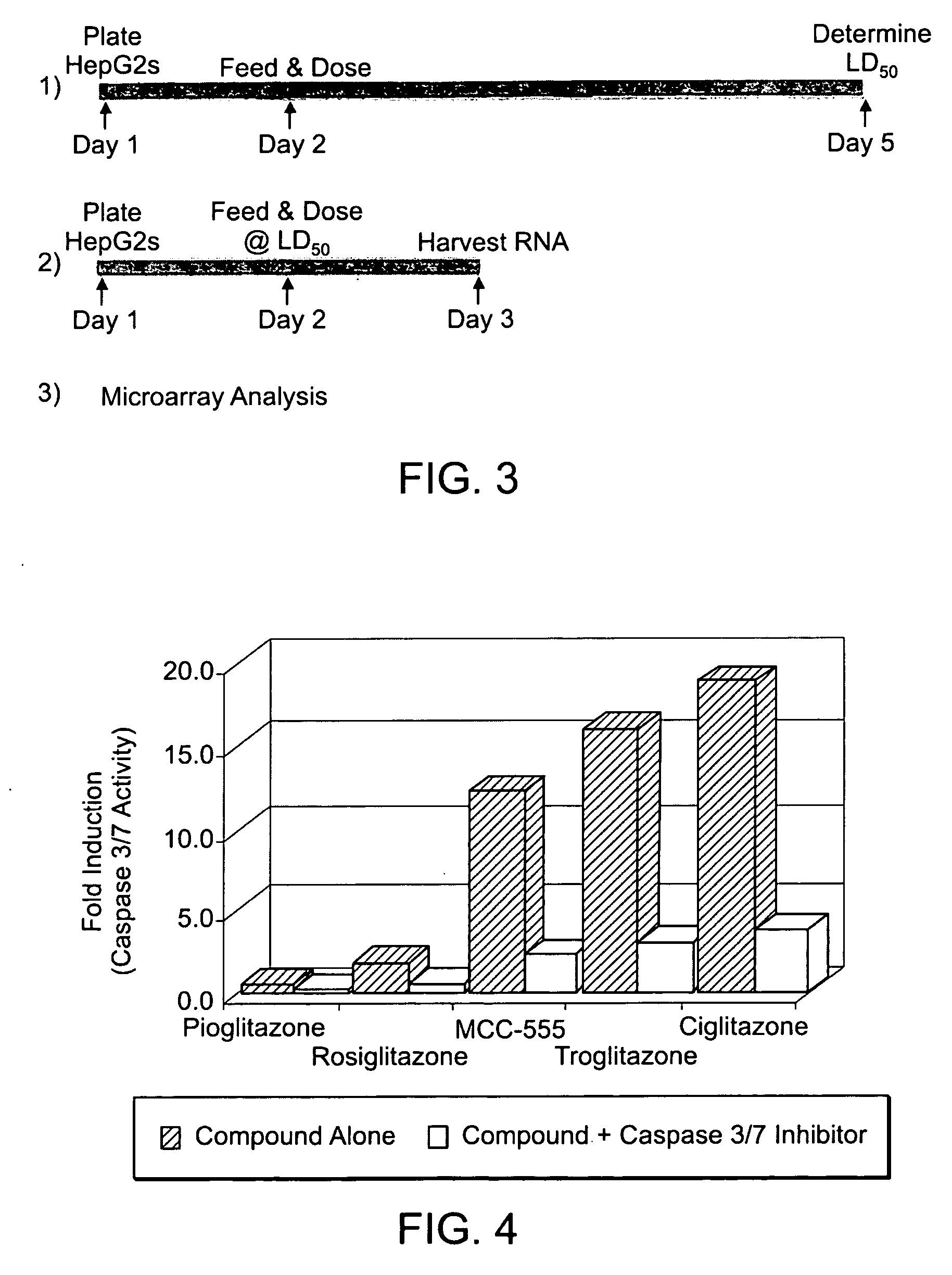Methods for identifying drug pharmacology and toxicology
- Summary
- Abstract
- Description
- Claims
- Application Information
AI Technical Summary
Benefits of technology
Problems solved by technology
Method used
Image
Examples
example 1
Determining the Cytotoxicity of Test Compounds
[0063] HepG2 cells were obtained from American Type Culture Collection (ATCC, Manassas, Va., cat. no. HB-8065). Cells were maintained as recommended in Minimal Essential Medium (MEM) (Gibco-BRL, a Division of Invitrogen, Carlsbad, Calif.) with 10% fetal bovine serum (FBS, HyClone, Logan, Utah) supplemented with antibiotics in p150 plates at 37° C., 5% CO2. Cells were split 1:5 and fresh media added every 3 days.
[0064] Cytotoxicity was assessed using the Alamar Blue-based CellTiter™ Blue Cell Viability Assay (Promega, Madison, Wis.) to determine the viable cell fraction that remained following a 72 hour treatment period. Cells (˜8,000 cells / well) were plated in 96 well BioCoat collagen coated plates (Becton Dickinson, Franklin Lakes, N.J.) using standard media. This allowed untreated control samples (0.25% DMSO) to be in late log phase (˜70% confluent) at completion of the study. Cells were then allowed to recover for 24 hours at 37° C....
example 2
Determining the Apoptosis in Response to Test Compounds
[0065] Apoptosis was assessed using the Apo-OneR Homogeneous Caspase-3 / 7 Assay (Promega) to determine the activity of an early apoptotic event: Caspase 3 / 7 activation. Cells (˜40,000 cells / well) were plated in 96 well plates (Corning, Acton, Mass., cat. no. 3595) using plating media (MEM, 1× Sodium Pyruvate, 1× NEAA, 10% FBS). Cells were then allowed to grow for 24 hours at 37° C., 5% CO2, and then serum starved by changing to serum free media (MEM, 1× Sodium Pyruvate, 1× NEAA, 0.1% BSA). Cells were allowed to remain in the serum free media for a further 24 hours. At 48 hours post-plating the media was removed and replaced with a test compound diluted in serum free media. A dilution series was created for each compound through serial dilutions performed in a separate plate and later transferred to the cells. Initially, a broad dilution series was conducted from ˜300 μM to ˜1 μM to determine approximate maximum tolerated and min...
example 3
Preparation of RNA
[0066] RNA for microarray analysis was obtained from cells treated for 24 hours at the determined LD50. Typically, ˜1.5×106 cells were plated in a p100 dish and allowed to settle for 24 hours by incubation at 37° C., 5% CO2 in MEM+10% FBS without antibiotics. Old media was removed and fresh MEM+0.1% BSA without antibiotics containing a test compound at LD50 concentration and 0.25% DMSO was added to the flask. A vehicle-only treatment was also performed. Duplicate treatments were performed for each compound as well as for vehicle-only controls. The cells were incubated with compound for 24 hours at 37° C., 5% CO2 and were harvested by scraping (without trypsinization) and centrifugation. The cell pellets were flash frozen and stored at −80° C. until ready for RNA extraction.
[0067] Total RNA was isolated using RNeasy Midi or Maxi kits (Qiagen) according to methods described by the manufacturer. Total RNA (100 μg) was routinely treated with 40 Units DNaseI (Ambiom, ...
PUM
| Property | Measurement | Unit |
|---|---|---|
| Time | aaaaa | aaaaa |
| Time | aaaaa | aaaaa |
| Molar density | aaaaa | aaaaa |
Abstract
Description
Claims
Application Information
 Login to View More
Login to View More - R&D
- Intellectual Property
- Life Sciences
- Materials
- Tech Scout
- Unparalleled Data Quality
- Higher Quality Content
- 60% Fewer Hallucinations
Browse by: Latest US Patents, China's latest patents, Technical Efficacy Thesaurus, Application Domain, Technology Topic, Popular Technical Reports.
© 2025 PatSnap. All rights reserved.Legal|Privacy policy|Modern Slavery Act Transparency Statement|Sitemap|About US| Contact US: help@patsnap.com



